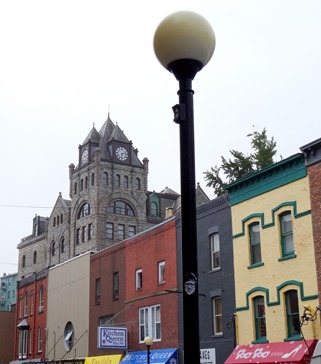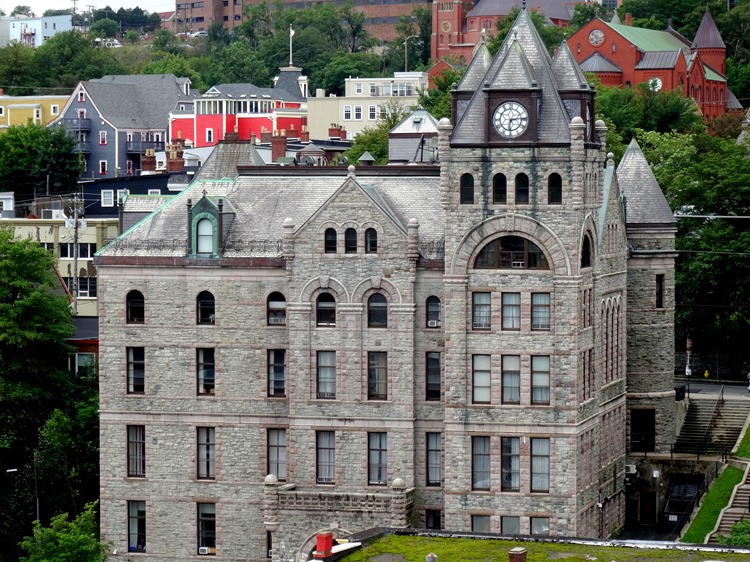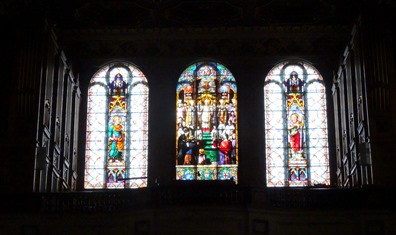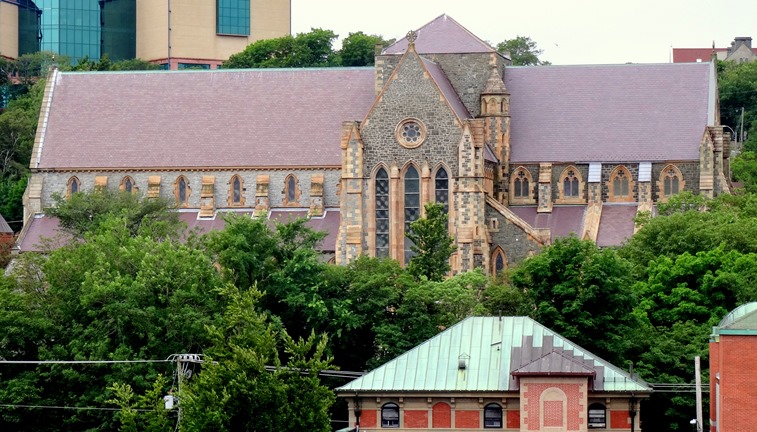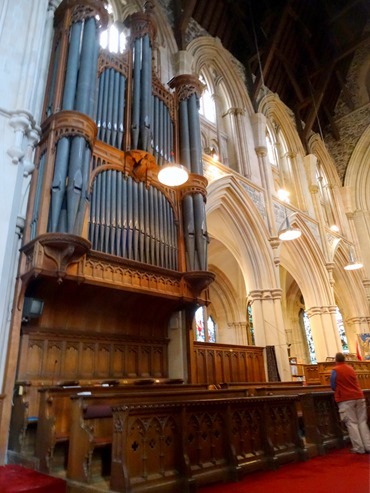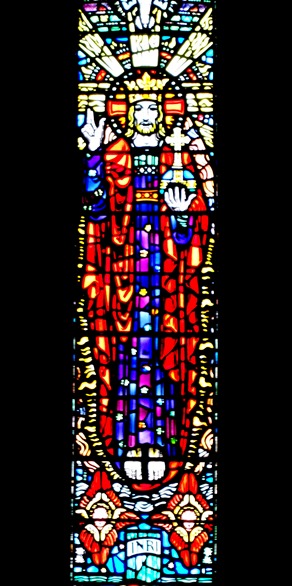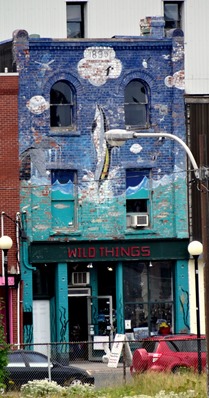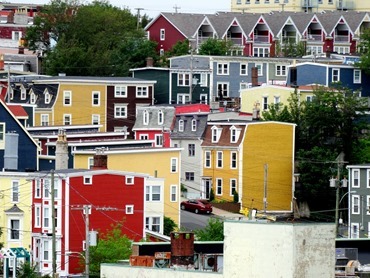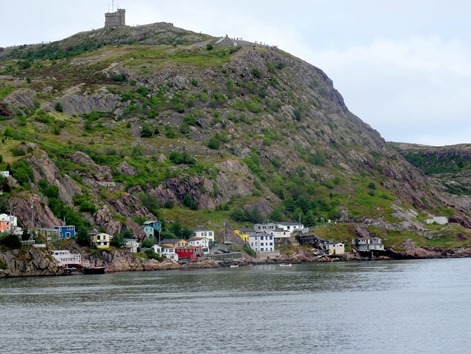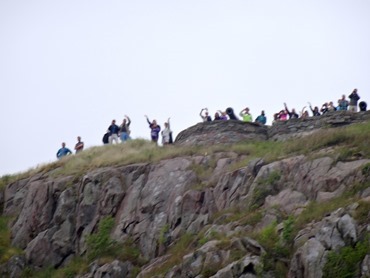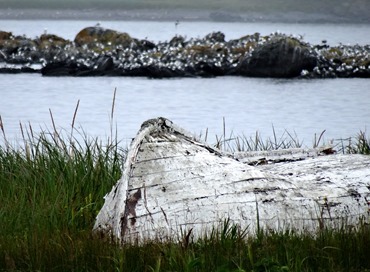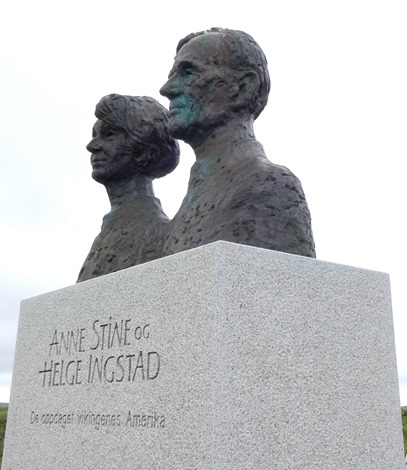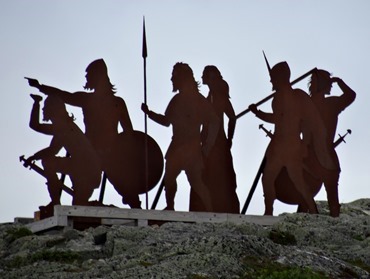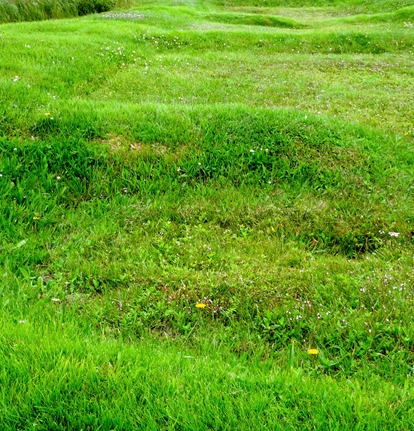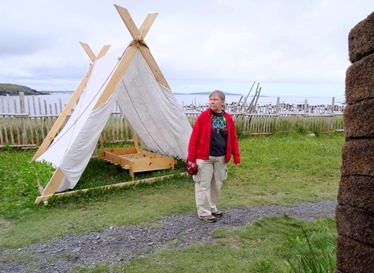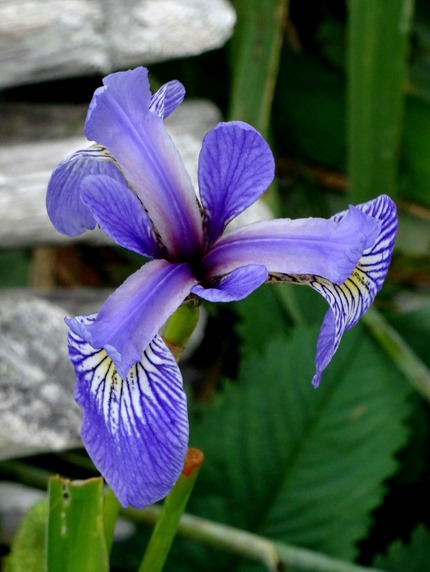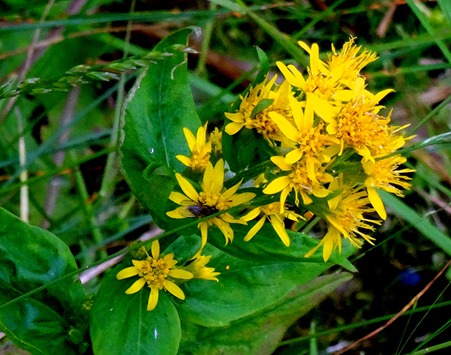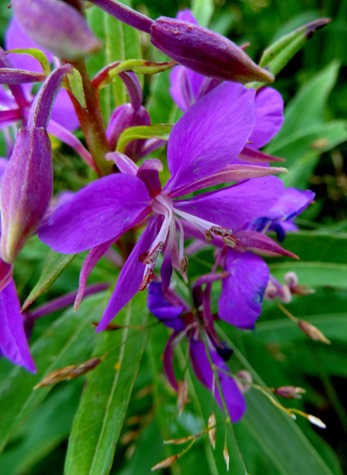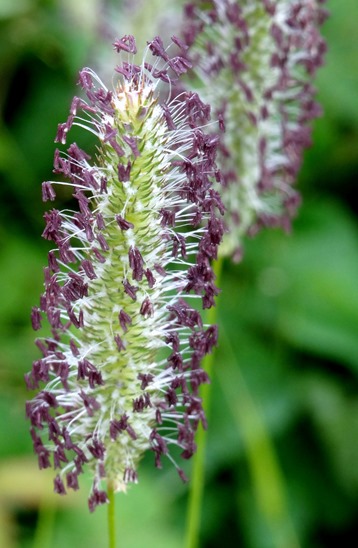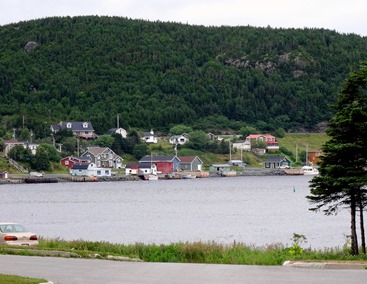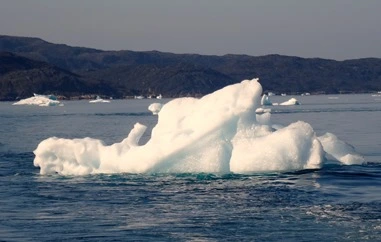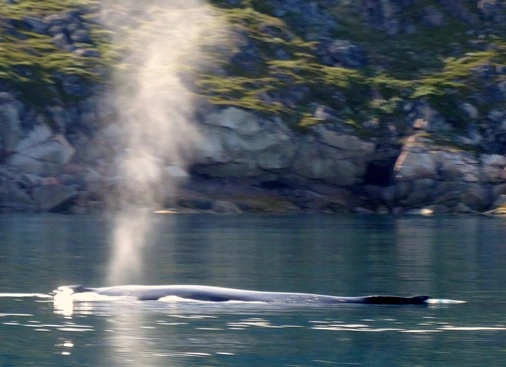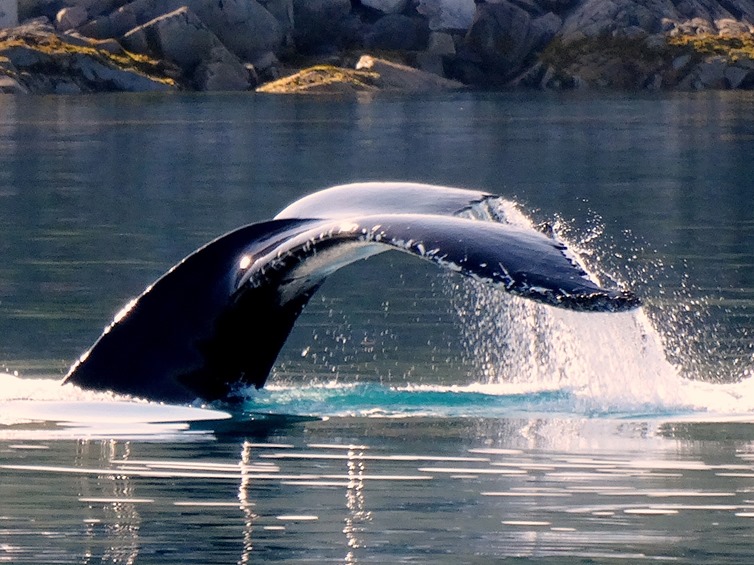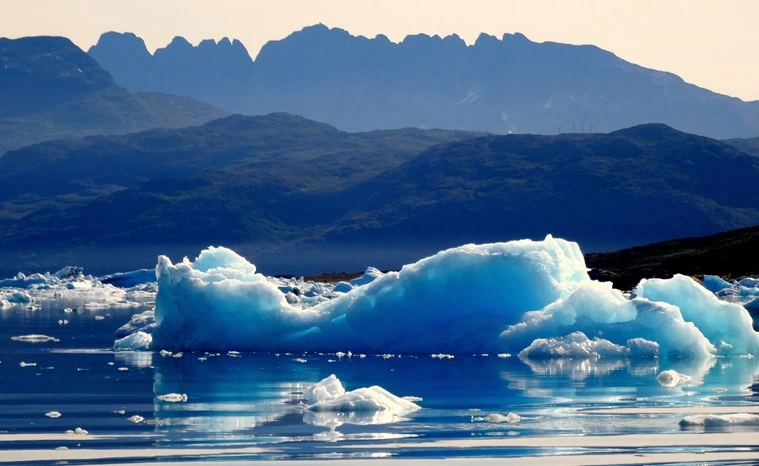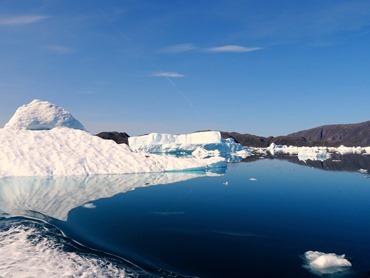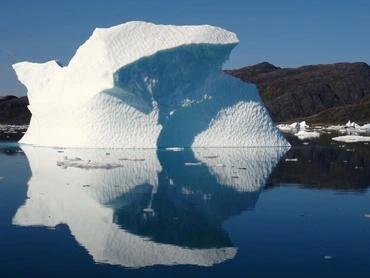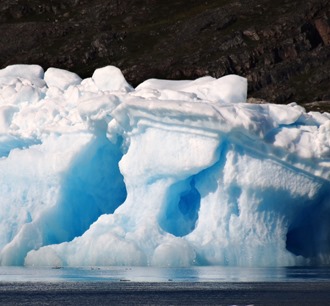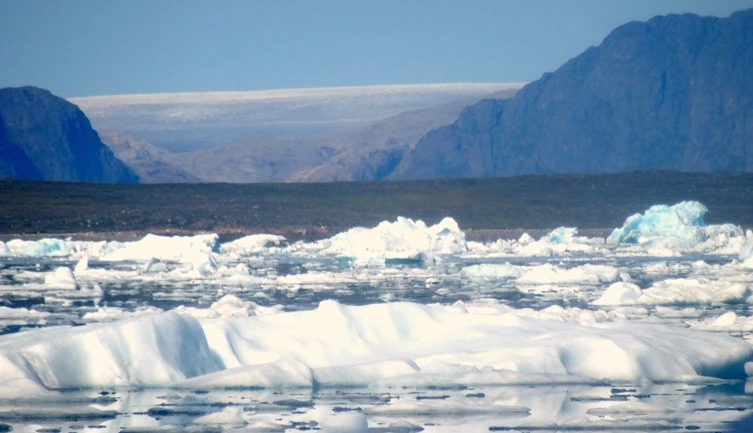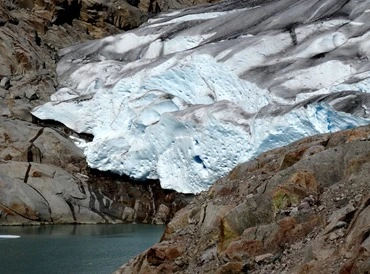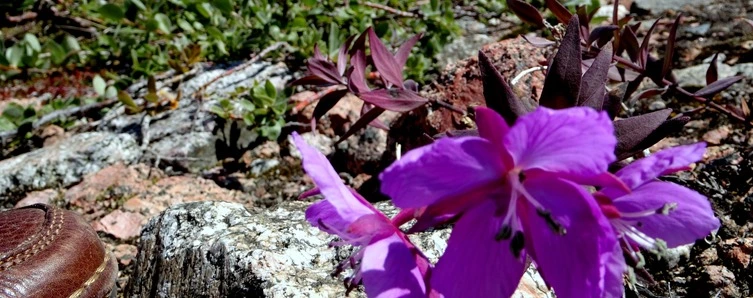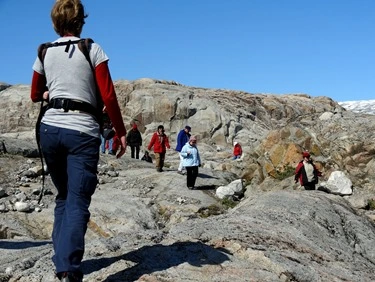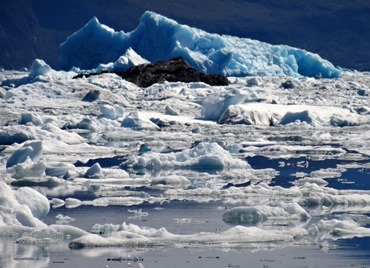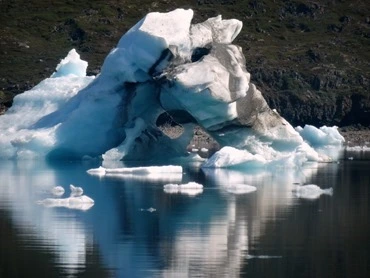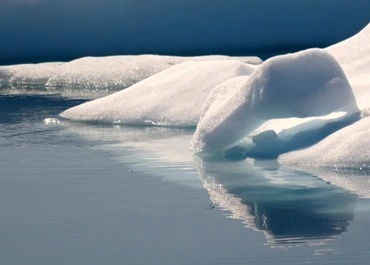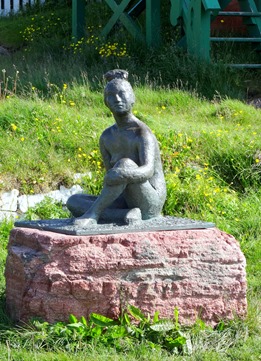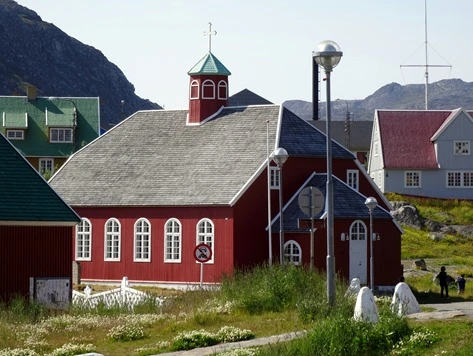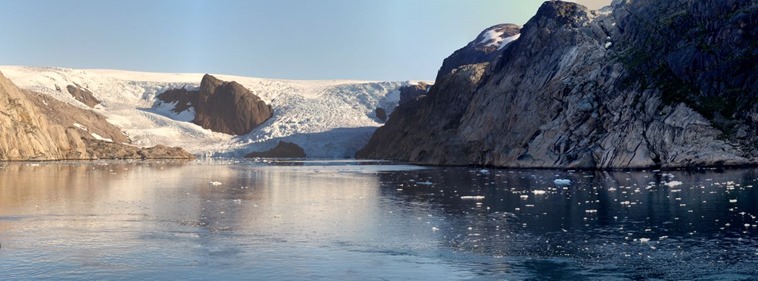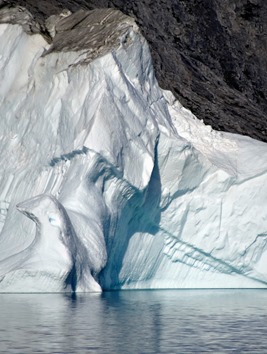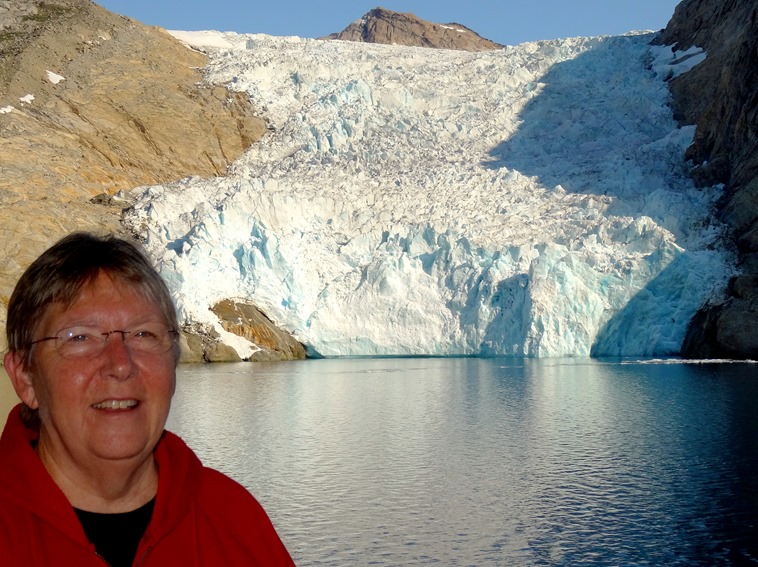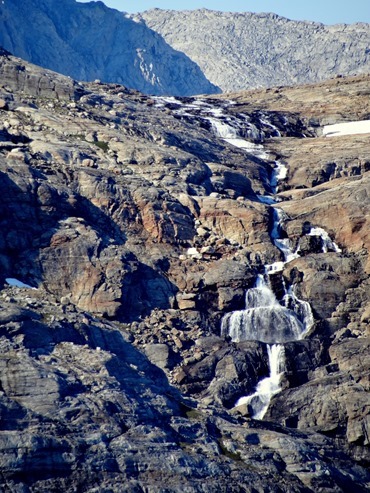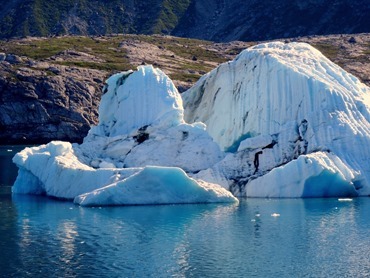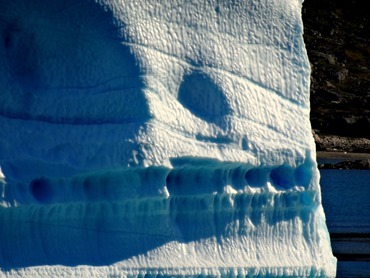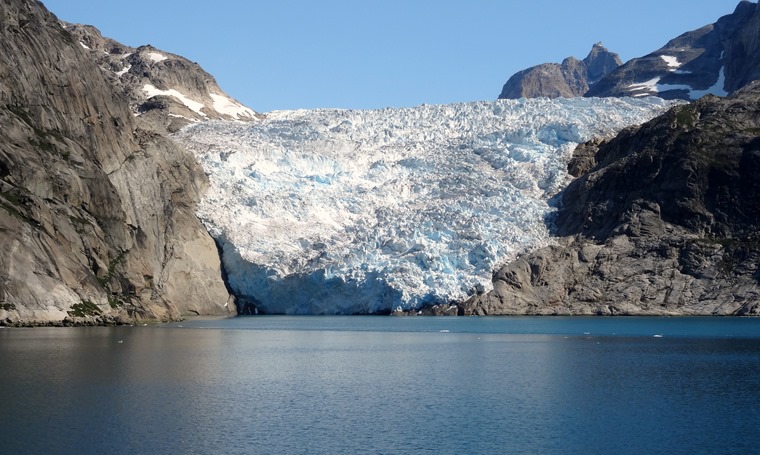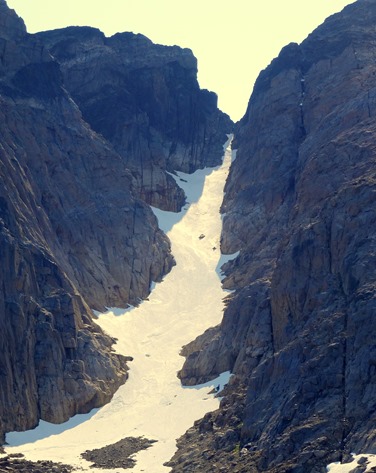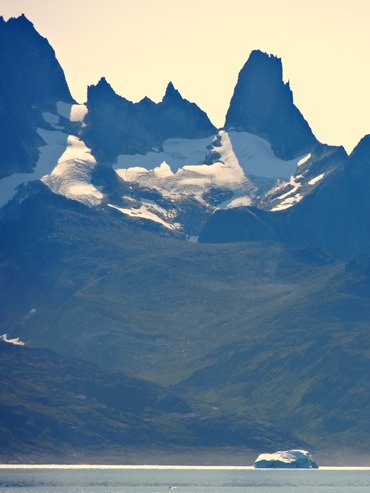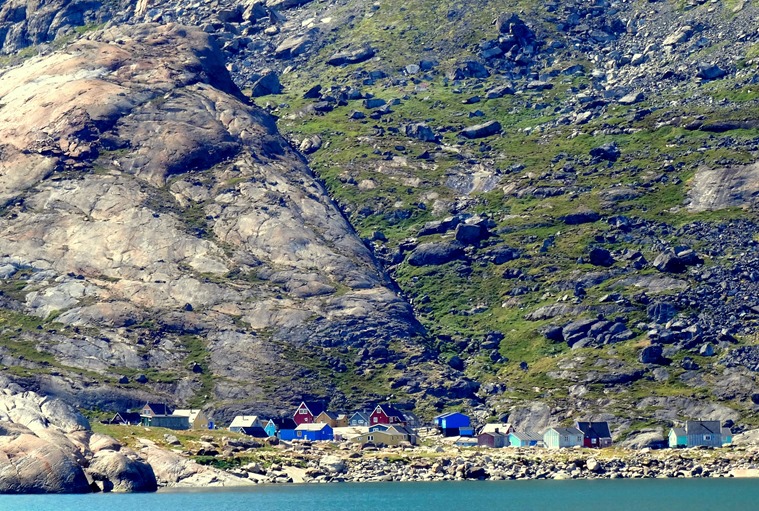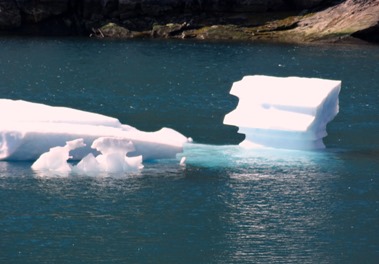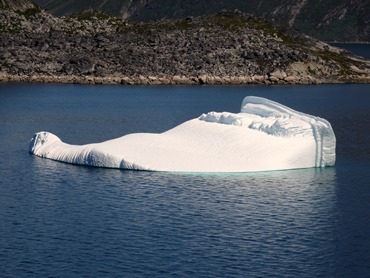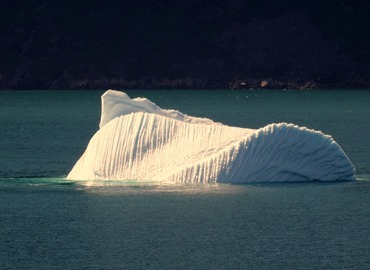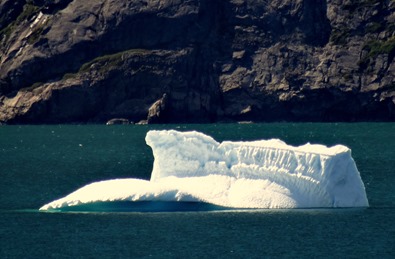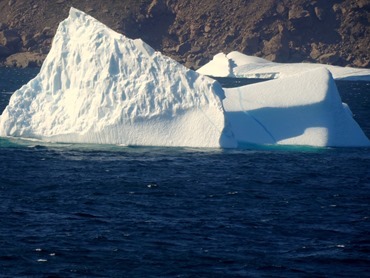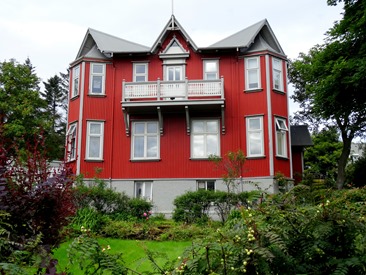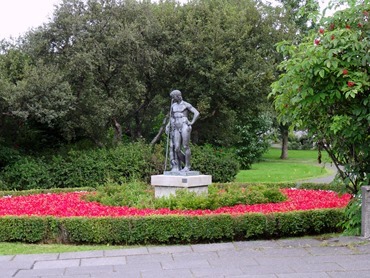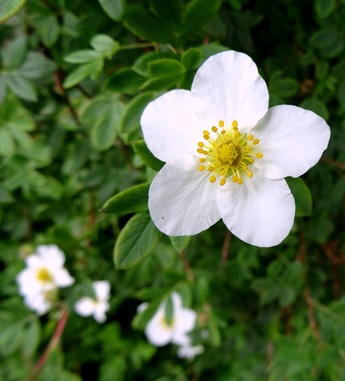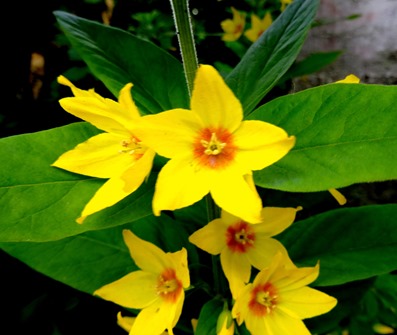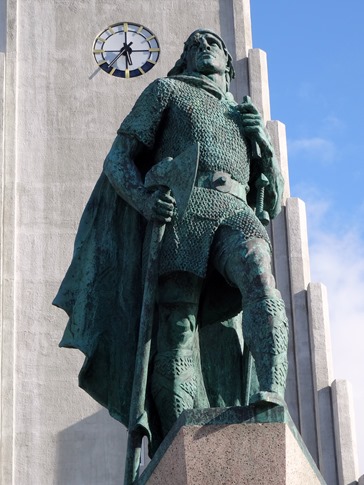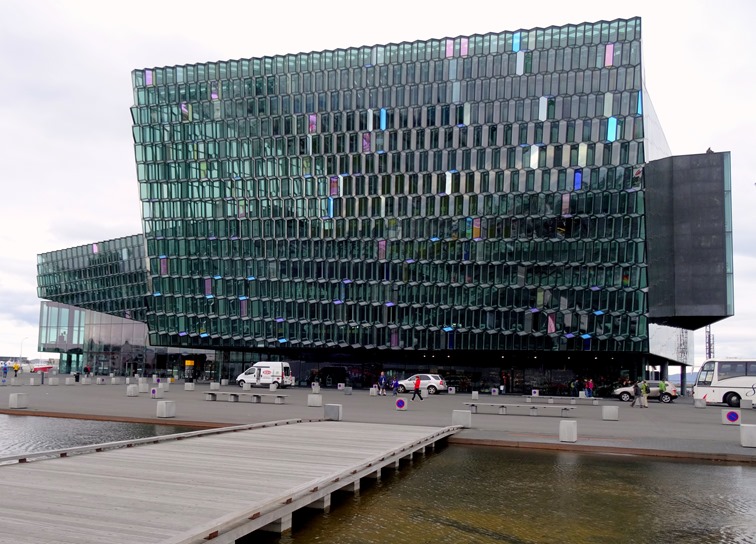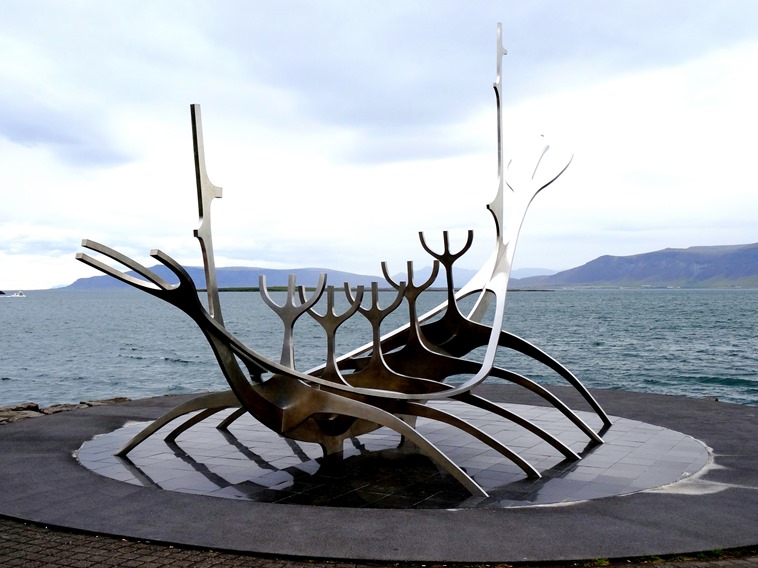St. John’s, Newfoundland, then home
The morning of August 13 found us docked at St. John’s, the capital and largest city (about 100,000) of the province of Newfoundland and Labrador. It is also the easternmost city in North America (not counting Greenland). While it was incorporated only in the 1920’s, Europeans have been living here since the 16th Century. The name may have come from the Feast of St. John the Baptist, which was reputedly the day in 1497 that John Cabot became the first European to set foot here. While it was first claimed by the English in the late 16th Century the town was subsequently attacked several times and briefly held by the Dutch and the French. The last battle of the French & Indian War was fought here.
Well, it had been a long trip & we were both still under the weather so we decided to just walk around town for a few hours & then spend some time relaxing on the ship. It was a very gray & sometimes drizzly day but St. John’s is a city of very colorful buildings that kept it from being too gloomy.
In addition to spending time in some of the shops on the first couple of streets from the harbor we passed the massive grey stone St. John’s Courthouse, built in 1904.
Further down the street we came upon the National War Memorial. Dedicated on July 1, 1924 by British World War I Field Marshal Douglas Haig plaques have since been added on its side commemorating Newfoundlanders who died in World War II, the Korean War & Afghanistan. Since Newfoundland did not become part of Canada until after World War II, the “National” in its title refers to the old Dominiion of Newfoundland rather than Canada. Around the memorial were wreaths dedicated mostly to regiments, perhaps because the 100th anniversary of the start of World War I was only a few days before we visited. The monument was located on a plaza with a broad stairway that was ringed by old metal lights topped by white glass globes.
We walked further up the very steep hill. St. John’s is sometimes compared to San Francisco partly because of the steepness of its streets & its colorful houses..
Up the hill we visited two churches named (as the city was) for St. John the Baptist. At the very top is the Catholic Basilica-Cathedral of St. John the Baptist., considered the mother church of Roman Catholicism in Newfoundland. It was built in the middle of the 19th Century. Imposing on the outside with two prominent bell towers, at the time of its completion it was the largest church in North America. On a balcony is a pipe organ with more than 4,000 pipes. Beneath the altar is a sculpture of “The Dead Christ.”
Since the Basilica is on the top of the hill its front steps give a fine view of the city’s large harbor, which is well protected from the sea.
We walked down the hill to the other cathedral named for St. John, this one Anglican. While it lacks the dramatic stature of the Catholic cathedral on the outside we thought the inside of this one had more warmth and interest. Begun in the middle of the 19th Century and completed in 1885, the church was badly damaged in the Great Fire of 1892. Rebuilding was completed in 1905, although it still lacks the spire it was originally designed to have. The congregation is currently raising funds to build one. The church says that this parish, founded in 1699, is the oldest Anglican parish in North America. This church also has an impressive pipe organ with four banks of pipes, two of which appear to have been added on.
We were getting tired by now, with all the up and down walking, so we finished our shopping and headed back to the ship. Throughout the day we passed a number of nice flowers (not wildflowers, this is a city), along with a very unusual utility box & more colorful buildings.
The ship left St. John’s at about 3:00. We were told that as we sailed past Signal Hill we would be saluted by musket fire. We were, but I could not see the shooting even though I scoured the top of the hill. It must have been coming from somewhere else, maybe the hill on the other side of the ship. Anyway, Signal Hill is where the fortifications defending the harbor stood for several hundred years. The last battle of the French and Indian War in 1762 was the Battle of Signal Hill. Its name stems from a signal flag mast that was used to signal the town when a ship was coming. The Cabot Tower was built there at the end of the 19th Century to commemorate the 400th anniversary of John Cabot’s initial visit and also Queen Victoria’s Diamond Jubilee. On December 12, 1901 Marconi received the first transatlantic wireless transmission on this hill, sent from Cornwall in the United Kingdom.
We sailed out of the harbor, past some birds on a cliff and some rocky waterfront cliffs. The next day we were in Bar Harbor, Maine. But we were still feeling poorly and we had been there before and weren’t very interested in seeing it again. Besides, it was a very gray day, it was a tender port and we had to pack and prepare to disembark in Boston the next morning. So we took a pass on Bar Harbor & spent a relaxing day on the Veendam. Disembarking in Boston the next morning, August 16, we retrieved our car from the motel where it had spent the trip & drove home. It was a long drive, but we were very happy to be in our own be again after a long and rewarding trip.
St. Anthony, Newfoundland
We anchored in the bay at St. Anthony on the morning of August 12. It was chilly and gray. We were anchored a good way from the town in this large harbor, with the red & white lighthouse at the entrance to the rocky bay the most interesting sight nearby.
We tendered into town but didn’t stay there. St. Anthony is a small town (fewer than 2,500) with little to see, so we signed up for an excursion to the real reason for coming here, L’Anse aux Meadows. This is an archaeological site of a 1,000 year old Norse village, the first (and only, so far) actual proof that the Vikings reached North America 500 years before Columbus.
The Icelandic Sagas tell of Leif Eriksson (whose statue we saw in Reykjavik) leading a group on a voyage to the west of his home in Greenland to a spot he called Vinland. The Saga of the Greenlanders and the Saga of Erik the Red (Erik was Leif’s father and the leader of the first Viking settlement in Greenland) are both pretty short and make good reading for anyone interested in this stuff. The Sagas indicate that the settlement lasted only a few years & was abandoned because of internal fighting among the Vikings and conflict with the locals, who the Norse called Skraelings.
But the Sagas are not real history in the modern sense and the idea that another European had reached America before Columbus was dismissed by most people. A Norwegian named Helge Instad read the Sagas, however, and concluded that Vinland was real and was probably located in Newfoundland. He went to northern Newfoundland and began asking around about any mounds in the area. One of the locals told him about some mounds thought to have been Indian remains. Instad and his wife, Anne Stine Instad, excavated the mounds in 1960 and found remains that turned out to be a Viking settlement. Anne led excavations there from 1961 to 1968, and proved that the settlement was Norse by finding a bronze Viking cloak pin among the ruins. As a result, today it is accepted that L’Anse aux Meadows was an 11th Century Viking settlement and that Columbus was not the first European to reach the Americas.
We boarded our bus and headed out with our knowledgeable and very engaging guide Chris. This is a remote area with no modern tour busses so we made the trip in school busses, which were less than comfortable.
The archaeological site, now a Canadian national park, has a reconstruction of how the village most likely would have looked. But about a mile away is a redundant reconstruction run as a private business, sort of a Disney-like “Vikingland” (although a lot smaller & without the rides & concessions). For reasons that are beyond me (unless they involve monetary incentives) we went first to the private site where we spent too much time on an entirely unnecessary visit. The time would have been better spent in the visitor center at the national park where we had insufficient time to review all the exhibits. Both of these sites, however, are located on a lovely bay that shows why the Vikings would have found it a good place to settle.
We drove the mile or so to the national park and walked to the visitor’s center. There was Viking themed artwork along the path, including busts of the Instads. In the visitor’s center we saw a film then had a little bit of time to look at the exhibits & the gift shop. From the porch of the visitor’s center was a great view of the whole area around where the Vikings settled.
Walking down the boardwalk path to the site we first came to a two part sculpture called Meeting of Two Worlds. It is a rather abstract representation of the first encounter between Europeans on one side with Americans on the other.
After each year’s excavations the site was buried again to protect the remains from the elements. Today all you can really see of the actual remains is a series of grassy mounds outlining the foundations of the original Viking buildings. Each has been identified but I can’t identify which buildings are in most of these pictures. The first one is where iron was smelted and worked (it’s obvious since it’s labeled) but apparently only enough iron for a few hundred nails was produced here. The multi-roomed structures were Viking longhouses, which generally housed several people and had connected outhouses for animals and work. Three longhouses have been recovered on the site. There are also a few smaller one-room huts, probably housing slaves or crew of low status, although one had weights suggesting it might have been a weaving workshop for women.
We visited the reconstruction of what the Viking buildings probably looked like. There were a couple of tents near the shore that looked like they might have been for storage. The other buildings had turf roofs over wooden walls with turf outside of them that made the building look like a hill from a distance. The exposed walls were covered with piled up peat rectangles which we were told would have an insulation value in modern terms of about R-100. I imagine that kind of insulation would be pretty welcome during the winter this far north. There were costumed people demonstrating the crafts that would have been practiced here by the Norse. When the Norse lived here this area was thickly wooded so that wood was plentiful for building. You will recall from earlier episodes that the opposite was true in Greenland, where trees are pretty much nonexistent. The Sagas say that Leif loaded his ships with wood each time he returned to Greenland, which must have been a very valuable cargo to sell there.
There were a lot of what looked like wildflowers in this area, although since these are carefully reconstructed sites who knows whether they were planted here initially.
Current thought is that this site was more of a way station for exploration further south than a village intended as a permanent settlement. But in any event, the Vikings only used this site for a few years & burned it when they left, presumably to deny its use to others. But its historical importance is not diminished by its relatively short duration.
So the Vikings left this spot and we did too, driving back to St. Anthony in time to permit just a quick look around. It seems to be a nice town with nice people. On the road to the Viking site we passed several very large piles of cut wood, some with vehicles parked nearby. Chris told us that no one ever steals wood from someone else’s cache and that they often leave the keys in their vehicles. But if anyone is in need of wood (or other supplies) they only have to ask and people are glad to share. There are Just a few modest buildings in the harbor area. Chris informed us ruefully that there isn’t even a place in town where you can sit down and have a beer! Perhaps the largest building in the area is the hospital, just up the hill from the harbor, which has a 360 degree ceramic mural by a well known Canadian artist named Jordi Bonet who was born in Spain. When we were returning from the hospital Chris was heading back to his car & he crossed the street to offer us a personal driving tour of the town, gratis. It was getting late, so we gratefully declined, but you see what I mean about the friendly folks here.
Qaqortoc, Greenland
I woke up in what seemed the middle of the night but was actually about 5:00 AM on August 10. I decided to peek out from between the curtains to see how bad the fog looked. It had been consistently bad the previous evening and the fog horn was blowing well into the night. To my surprise there was no fog at all. Instead there was a beautiful Greenlandic sunrise in progress.
We anchored outside of the small harbor at Qaqortoc about three hours later. With a population a little over 3,000 this is the largest town in southern Greenland. People have inhabited this island for some 4,000 years but Qaqortoq was founded in the late 18th century by the Danes who called it Julianehaab after their queen. It is not far from the spot where Erik the Red established the first Norse settlement in the 10th century. As best I can tell, the town’s name seems to be pronounced “kay-ker-TAWK.” I think it is the first time I have ever seen a word with 3 q’s and no u’s.
We had already explored an Inuit town in Greenland (Nanortalik) and since there are no roads out of Qaqortok there were no land excursions available. So we signed up for a boat tour arranged by a fellow passenger that was to take us to the Twin Glacier on the mainland of Greenland where it is possible to approach close enough to actually touch a piece of the Greenland ice sheet. Yesterday we cruised through Prins Christian Sund & saw icebergs from the ship’s decks above; today we would be right down in the water with them. So we tendered into the harbor where we found our tour guide and the two boats for our trip.
The man who was originally supposed to be our guide was out of town leading a group hunting reindeer with crossbows (really), so his wife Metta acted as our guide. She approached me as we emerged from the tender looking lost & asked if we were the group going to the ice cap. She was wearing a sort of snugli in which was her infant son Olaf. Quite the undertaking, we thought, in those conditions. Metta is originally from Denmark. She told us that when Olaf was on the way she was told that she could only stay in Qaqortoq to give birth if there was no chance of any complications. Because they were not able to rule that out she had to spend her last few weeks in Nuuk where apparently there is a better equipped hospital. That’s a pretty good indication of how isolated this town is, only accessible from other towns by helicopter and, in summer, by boat. Metta told us that she and her husband are planning to move to a much smaller village which will benefit his hunting business.
There were about 20 passengers in our boat, which was the larger and faster of the two. There were seats inside with good windows but you could also walk outside to see things better. As we made our way out of town and around toward the passage leading toward the glacier we passed large icebergs and mountain views in the early morning sun.
Now came one of the highlights of the day, if not of the whole cruise. The Inuit men running the boat spotted a whale spouting near the shore & turned the boat that way to get us a closer look. Usually when you see a whale in the ocean you only see a little of its back and maybe its tail as it dives (you have seen my pathetic pictures of this), but this humpback whale was rolling around on the surface blowing its spout for quite a while. It seemed almost like he was performing for us. Then with a flip of his tail he dived under the water and was gone. Spectacular!
As we headed on toward the glacier the water became more and more crowded with icebergs in all shapes & sizes. Here is also a picture of the other boat in our expedition, which was somewhat smaller than ours. As you can see, there was a lot of skill involved in maneuvering the boats through the floating ice.
finally we reached the Twin Glacier. As its name implies there used to be two glaciers here but only one is left. In fact, Metta told us that (I think I have this right) over the last 20 or 30 years the ice has retreated a couple of miles! We were glad to see it before its completely gone. We pulled up at a floating dock beside a huge stone outcrop from the glacier where a makeshift stairs had been built. Stepping onto the floating dock from the boat was tricky because it was not entirely stable & you had to walk along the edge of the boat before reaching the jumping off point. And the steep steps were not an entirely easy climb. Mary decided to wait at the top of the stairs because her knees were hurting & the terrain over the rocks was quite rough. But yours truly pushed ahead. Across from the dock was a waterfall at the base of a cliff & you could see the ice cap from there over the rocks.
We walked across the very uneven rocks, climbing here & descending there. We had hoped to be able to walk all the way up to the edge of the glacier where you could get up close & personal with the ice, but because the ship was leaving early (4:00) there wasn’t time to go the whole way. If only the ship had been leaving at 5:00 instead we would have had time to do that! So that was disappointing, but the view was great & we really got pretty close to the glacier.
There were several varieties of small wildflowers that were somehow eking out a living in this barren & cold rock. Life is very resilient!
Time was up way too quickly & we were herded back to the boat. From the rock we could see the distant entrance to the bay where, Metta told us, the front of the glacier was 2 or 3 decades ago.
So we began the long boat trip back to Qaqortoc. It was now early afternoon & the ice seemed to be a lot thicker than it had been earlier so the boat had to go very slowly. It was good to be careful since the last thing we wanted was a Titanic moment, but we were starting to get a little anxious about making the last tender to Veendam at 3:30. I doubt that they would have departed leaving 30 passengers in Qaqortoc, but they are not obliged to wait for a private excursion that is late returning & this remote spot would be a particularly bad place to be stranded.
But eventually the water cleared enough for our boat to pick up speed & we made it back to Qaqortoc in plenty of time. And guess what we saw along the way? Right, more icebergs! As I have mentioned before the floating ice comes in all shapes & sizes, from as big as an apartment building to small enough to fit in your glass of water. Here is another sampling.
So in the end, despite our concern, we made it back to Qaqortoc with enough time to spare to enable us to walk around the central part of the town. Qaqortoc has the oldest public fountain in Greenland (there are only two) built in 1932, which is topped by whales spouting through their blowholes. There is an unusual amount of outdoor art for such a small town, thanks in large part to a project from the early 1990’s called “Stone & Man” in which a number of artists were invited to carve sculptures into rock faces and boulders. Then there is the town itself, displaying a riot of primary colors on its buildings and homes. Since Greenland has no trees from which to get wood for building houses, the buildings here are imported prefabricated from Scandinavia.
As we left for the Veendam we saw several kids having a great time jumping off the pier into the icy cold water. Its hard to imagine doing that (let alone enjoying it as much as they were), but it’s August so this is as good as it gets for swimming around here. After boarding the ship we took a final look at colorful Qaqortoc & headed out to sea, passing (you guessed it) yet more mountains & icebergs, one of which had a large window in it. A fitting farewell to Greenland.
Prins Christian Sund, Greenland
And now for something completely different. There is no port to explore today & we spent the whole day on the ship. August 9 was a sea day that we spent on “scenic cruising” in the beautiful Prins Christian Sund. The southern tip of Greenland is actually the Cape Farewell Archipelago which is separated from the mainland of Greenland by a narrow fjord called Prins Christian Sund (Ikerassuaq in Icelandic). We entered from the east so the mainland was on our starboard (right) side while Sangmissoq Island (or Christian IV Island to the Danes) was to port (left). We entered the Sund early in the morning and spent about 10 hours before exiting into the Labrador Sea. (Reminder to newcomers: a caption should appear if you hover your mouse over a picture without clicking.)
As you can see from the pictures it was a gloriously sunny & clear day. This is not usually the case, so we were very lucky. Often bad sea conditions or fog or ice floes clogging the narrow entrance make it impossible for a cruise ship to enter the Sund, so sometimes the Voyage of the Vikings has had to skip this part or cut it very short if ice is encountered after entering. Our travel guide Barbara, who has been doing this kind of work (although not always in Greenland) for about 25 years, said that this was the best day she had ever seen in the area.
Well, we were woken up (thankfully) just as we entered the Sund by Barbara, who was narrating the passage over the loudspeakers on the deck just outside our glass door. So before going to breakfast we had time on deck to take in some of the early morning sights. We were sailing past the Greenland ice sheet on the right. & we passed a number of outlet glaciers where the ice is moving down to the water and breaks off into icebergs. The Greenland ice sheet is the second biggest in the world (after Antarctica). If it all melted the world’s oceans would rise more than 7 feet. So if you live near the ocean shore you really might want to get on board in fighting global warming!
When we came to a glacier the captain would stop in front of it and slowly turn the ship around 360 degrees so everyone could see it. While we didn’t see any large pieces calving off a glacier into the water the evidence that it happens was everywhere in the form of floating ice, large and small. The small pieces tended to congregate in fields that stood in the sunlight against the dark water reflecting the nearby rock faces. You will be seeing pictures of icebergs in all shapes and sizes throughout this episode (and the next).
We came to one of the biggest icebergs of the day. Most of these icebergs are actually a lot bigger than they look in the pictures. Most were taken from the 6th deck of the ship and some from the 12th, so its like looking down from a 6 or 12 story building. But there was no looking down at the top of this one from the 6th deck. And remember that at least 70% of an iceberg is under the water. I have several pictures of this iceberg as we approached and then passed it. You will notice that it has a lot of dirt on the top. That may originally have been the bottom of a glacier, which picks up dirt as it scrapes along the ground . We could see it a long way away since it was big and sitting out in the water like a jewel on display.
While we were on deck admiring the view the staff came around distributing Dutch pea soup. Not really what we think of as soup since it was not liquid at all and had the consistency of mashed potatoes, but it was warm & quite delicious. Usually when there is food I am too busy eating to think about pictures, so there are no pictures of the soup. Anyway, we sailed past another glacier, some more icebergs & a nice waterfall. The waterfalls are formed by melting ice from the ice sheet finding its way through the craggy walls of the fjord.
Here is yet another glacier. Tired of them yet? We weren’t.
We came to a hanging glacier, called that because it hangs on the cliff without coming down to the water. It also had waterfalls. You may have guessed by now that I like the craggy blue front edges of the glaciers.
Here are some more icebergs, mountains and boats. We were surprised to see motorboats & a sailboat in this remote area, but there they are. The guy standing on the front motorboat has a camera and is taking pictures or a movie of the Veendam. It is interesting when sailing past an iceberg to see how different they look from different angles. The mountains here are pretty big, rising from the water as high as 6,000 feet.
Next, another glacier. This one looked as we approached like there was only a point of ice touching the water. But as we passed it became clear that there was a wide ridge at the water’s edge.
Beyond the glacier were cliffs with several glacial melt waterfalls wending their way in and out of rock channels. Not much more to say about that, so just look.
Throughout the afternoon we saw a lot of mountain peaks, some with snow caps, each of which would have been really impressive standing alone. In the context of so many others they lost some of their individuality, but were still quite beautiful. Later in the afternoon as the sun dropped a little lower the shadows and changing sunlight gave them even more interest. You can see from the green color in some of these photos that there is flora in this area, but it does not grow much. We were told that there are actually trees here, but you can’t see them because they grow no taller than 3 or 4 inches even though they may live for years.
In the afternoon we sailed past an isolated village called Aappilattorq on an outcrop from the huge mountains behind it. Although this spot has been inhabited for more than a century there are fewer than 150 people who live here. The village has a school, a church and a fire station. Inaccessible by land, the village can be reached by helicopter or (in summer) by boat. But they do have electricity and apparently television. We actually passed this village twice as the ship went up and back through the fjord in which it sits. I have seen it suggested that the bright colors used in Greenland are to enable folks to find their houses when the snow is deep, but I think it is probably a natural response to the gloom of the long dark winters. Whatever the reason, they certainly are colorful.
We passed a lot more icebergs as the afternoon wound down. Icebergs often lose mass more in the underwater portion than the part above water. As that happens the iceberg gets lighter and floats higher in the water. Many icebergs display a sort of straight shelf above the water line caused by this, with the shelf having originally been at the water line. Sometimes as the underwater erosion continues there may be more than one shelf line on the side. The change in center of gravity may also cause the iceberg to tip, in which case the lines become diagonal, or even to flip entirely over. One iceberg dramatically flipped just as we were passing it, just as if it had been paid to perform for us. There is an “after” picture of it below, but unfortunately since I didn’t know it was going to do this I didn’t take a “before” picture. (But there may be a later “after” picture as it seems to have risen higher in the water in the second picture.)
Just before leaving the fjords we sailed past one last mountain peak glowing in the late afternoon sun. On one side of it were some rocks, one of which was standing precariously on its end.
So the weather had amazingly held for us through the entire trip through Prins Christian Sund. There was plenty of sun, no clouds at all and although it was pretty chilly there was little wind so it wasn’t too cold to enjoy the trip mostly on the deck. But when we passed out of the fjord, boom! The fog dropped around us suddenly like a curtain coming down. The fog horn was blowing all evening and into the night to the point were we all but gave up hope of being able to tender into our next port in the morning. Just outside the sound we could still see impressive icebergs shining in the evening sun filtered through the fog.
Reykjavik, Iceland (Day 2)
August 7 was our second day in Reykjavik and we had nothing scheduled beyond a walk around the town. Reykjavik has two docks, one right downtown and the other two miles away. Guess which one we were at? Normally we would have walked the two miles to and from town but both of us were still under the weather and we had to be back early because the ship was scheduled to leave at 5:00, so we decided to take the shuttle bus into town. Unfortunately, it was a local bus rather than a Holland America shuttle so we had to pay. We had been told the price would be a steep $5.00 each way per person. But when we purchased our tickets it turned out that it had gone up 50%! Have I mentioned that Iceland is one of the most expensive countries in the world? We paid up & went into town.
Our first objective was the library, so we stopped into the tourist information office for directions. It turned out that the city library was just a block away. We spent a long time in confusion looking for it, then finally realized it was inside a building and couldn’t be seen from the street. It really wasn’t worth all that trouble; very pedestrian & disappointing.
Fortunately there is another library in town, the National Library. Getting there involved a fairly long walk, mostly uphill, through a nice residential neighborhood with lots of flowers. Since Iceland is short on trees many of the houses have metal rather than wood siding & even metal roofs. They come in bright colors, though. We have seen that in Greenland & Norway too, which makes me wonder if the long winter with little sunlight makes people yearn for bright colors to dispel the gloom. We also walked past a cemetery, called Holavallagardur, that dates back to 1838. I understand it is the largest cemetery in Iceland. Notably, it is full of various kinds of trees, which is a rarity in Iceland, but we noticed that Reykjavik seems to have a lot more trees than anywhere else we visited here. Presumably, most if not all of these trees were cultivated rather than growing wild.
We found the National Library (after stopping in the National Museum for directions) & it was worth the trouble. It is a large red & white building on a corner across the street from the university. The national library was founded in 1818 and it was combined in 1994 with the university library when this building opened. So here is some Icelandic: the building is called Þjóðarbókhlaðan and the combined library is called Landsbókasafn Íslands — Háskólabókasafn (island means Iceland & Haskola seems to mean university, while bokasafn means book collection).
Inside the library are several interesting works of art, including a stained glass window of three heads looking to the sky, a wooden sculpture of a guy we were told was (I think) an important professor, and a chess table just waiting for some players.
We walked past Tjörnin (The Pond), a large lake in the middle of town. It was decorated by sculptures and a lot of colorful flowers and there was a fountain in the middle. The sun was out at this point so it was a very pleasant walk.
This is a good place to show flowers, since many of them were in this park. But really Reykjavik seems to have a lot of flowers, particularly in the residential neighborhoods.
After a long uphill walk through a residential neighborhood, with the help of a map we finally reached the Hallgrimskirkja. You may remember that I suggested this tall church could be seen from everywhere in town, but it seems I was wrong since we had trouble finding it when we were actually trying to reach it. In yesterday’s episode you saw this church in bright sunlight, but by the time we reached it on this day the weather had turned threatening, which added to the atmosphere.
You will notice at the left of this picture a large statue. That is Leif Eriksson, the first European to reach America more than 500 years before Columbus. This statue was given to the Icelandic people by the United States in 1930 on the 1,000th anniversary of the first Althing (see yesterday’s episode for an explanation of this). Interestingly, that was about 15 years before this church was built, so I wonder where it was kept until then. Leif is holding a battle axe in his right hand and a cross in his left. It makes him look like a Crusader, which he wasn’t. I wonder how the U.S. government erecting a statue of a heroic figure carrying a cross squares with the First Amendment.
There is supposed to be a great view from the tower of the church but there was a long line waiting to go up so we skipped it. We walked down the street from the church toward the harbor. It is a well known shopping and restaurant district & we spent some time perusing some of the pretty but very expensive things in the stores. There is a lot about Iceland that is unusual, and that includes some very eclectic museums.
It was getting late (& rainy again) so we headed back to the bus stop, which was in front of Reykjavik’s modern concert hall, just opened in 2011, called Harpa. It is a pretty impressive glass & steel building right on the water. You can see right through it in some places. Inside, among other things, was a sculpture of a reindeer that caught our eye(s).
Before catching our bus we walked down the waterside a ways to see The Sun Voyager, a metal ship sculpture by the bay. It was erected in 1986 & apparently its sculptor thought of it as a dream ship and not a Viking ship. Be that as it may, it sure looks like an abstract rendering of a Viking ship & really that’s one of the things that makes it so cool. Walking back from the sculpture we passed the interesting looking National Theater building, which stood out among a lot of nondescript buildings in this area.
So we made it back to the ship on time, but because of swells from a weather front coming in from the west Veendam was unable to pull away from the dock. Two tugboats were brought alongside & they finally managed to pull us out into the water so we could begin our voyage back to Greenland. As we pulled away we got a last glimpse of the Videyjarstofa on Videy Island. Now a restaurant, this house was built in 1755 and was the first stone building in Iceland. It was right across the harbor and could be seen from our window throughout our stay.
The weather doesn’t look all that bad in these pictures, but it was foggy and the water was pretty choppy all the next day on our way to Greenland. There is a substantial history of having to forego at least part of Greenland on the Voyage of the Vikings because of weather and ice blockage so there was a lot of suspense about what we would encounter once we got to Greenland. You will have to tune in to the next two episodes to find out!



